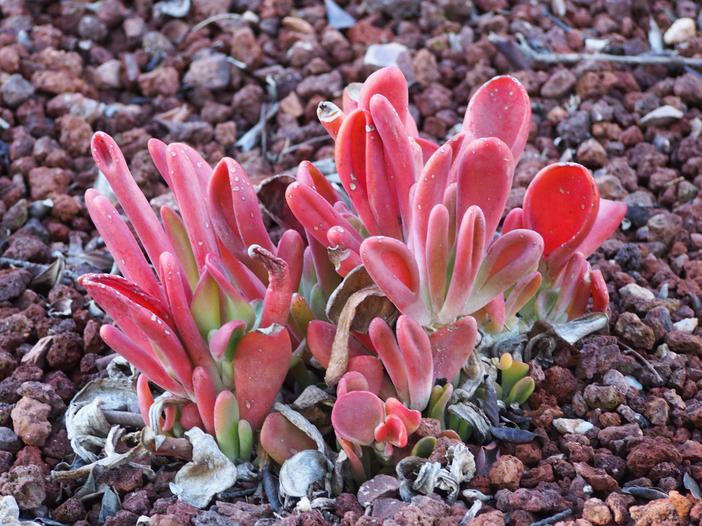Paddle Plant
(Kalanchoe luciae)
Paddle Plant (Kalanchoe luciae)
/
/

Agnieszka Kwiecień, Nova
CC BY-SA 4.0
Image By:
Agnieszka Kwiecień, Nova
Recorded By:
Copyright:
CC BY-SA 4.0
Copyright Notice:
Photo by: Agnieszka Kwiecień, Nova | License Type: CC BY-SA 4.0 | License URL: https://creativecommons.org/licenses/by-sa/4.0 | Uploader: Nova | Publisher: Wikipedia Commons





























Estimated Native Range
Summary
Kalanchoe luciae, commonly known as Paddle Plant, is an evergreen succulent native to rocky outcrops and slopes in South Africa, Eswatini, Mozambique, and Zimbabwe. It typically grows to a height of 1-2 feet (0.3-0.6 meters) and a width of 2-3 feet (0.6-0.9 meters). The Paddle Plant is characterized by its large, rounded, fleshy leaves that are gray-green with red margins, especially pronounced under bright sunlight. The leaves form a basal rosette and can resemble a paddle, hence the common name. It produces a tall flower spike with clusters of tubular, white flowers during late winter to spring, which are moderately showy. The plant’s striking foliage and architectural form make it a popular choice for succulent gardens, rock gardens, and as a container specimen.
Paddle Plant is appreciated for its drought tolerance and low maintenance requirements, making it ideal for water-wise landscapes. It thrives in full sun to part shade and requires very little water once established, preferring well-drained soil. It is susceptible to overwatering, which can lead to root rot. Kalanchoe luciae is also valued for its winter blooming habit, providing interest during a season when few other plants flower. It has been recognized with the Royal Horticultural Society’s Award of Garden Merit, indicating its exceptional qualities for garden use. While generally pest-free, it can occasionally suffer from mealybugs or scale insects.CC BY-SA 4.0
Paddle Plant is appreciated for its drought tolerance and low maintenance requirements, making it ideal for water-wise landscapes. It thrives in full sun to part shade and requires very little water once established, preferring well-drained soil. It is susceptible to overwatering, which can lead to root rot. Kalanchoe luciae is also valued for its winter blooming habit, providing interest during a season when few other plants flower. It has been recognized with the Royal Horticultural Society’s Award of Garden Merit, indicating its exceptional qualities for garden use. While generally pest-free, it can occasionally suffer from mealybugs or scale insects.CC BY-SA 4.0
Plant Description
- Plant Type: Succulent
- Height: 1-2 feet
- Width: 2-3 feet
- Growth Rate: Rapid
- Flower Color: White
- Flowering Season: Spring, Winter
- Leaf Retention: Evergreen
Growth Requirements
- Sun: Full Sun, Part Shade
- Water: Very Low, Low
- Drainage: Fast
Common Uses
Bee Garden, Bird Garden, Butterfly Garden, Drought Tolerant, Fire Resistant, Groundcover, Hummingbird Garden, Low Maintenance, Potted Plant, Street Planting
Natural Habitat
Native to rocky outcrops and slopes in South Africa, Eswatini, Mozambique, and Zimbabwe
Other Names
Common Names: Northern White Lady
Scientific Names: , Kalanchoe luciae, Kalanchoe aleuroides,
GBIF Accepted Name: Kalanchoe luciae Raym.-Hamet